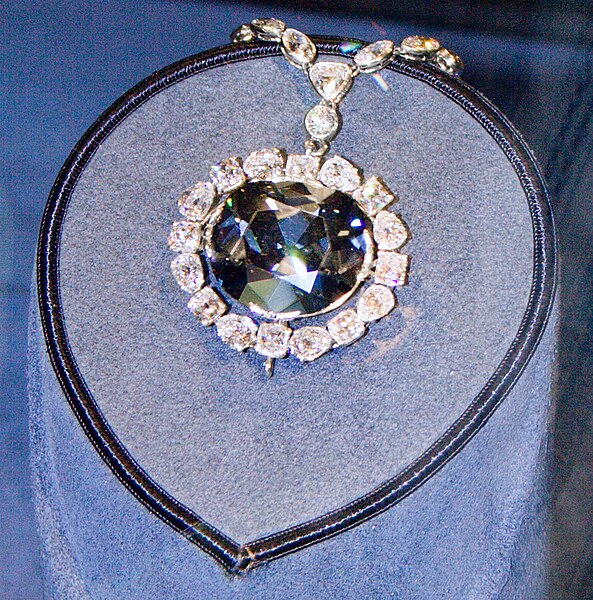Golconda diamonds are mined in the Godavari-Krishna delta region of Andhra Pradesh, India. Golconda Fort in the western part of modern-day Hyderabad was a seat of the Golconda Sultanate and became an important centre for diamond enhancement, lapidary, and trading. Golconda diamonds are graded as Type IIa, are formed of pure carbon, are devoid of nitrogen, and are large with high clarity. They are often described as diamonds of the first water, making them among history's most-celebrated diamonds. The phrase "Golconda diamond" became synonymous with diamonds of incomparable quality.
Sindbad the Sailor and the Valley of the Diamonds, illustrated by Maxfield Parrish (1870–1966)
A scene of Machilipatnam port in 1676 AD, it was a prime seaport of Golconda Sultanate
Diagram of the pre-1852 cut Koh-i-Noor. Fig I. The shaded area is the base. Fig II. A: flaw; B and C: notches cut to hold the stone in a setting; D: flaw created by fracture at E; F: fracture created by a blow; G: unpolished cleavage plane; H: basal cleavage plane. Fig III. The opposite side shows facets and peak of the "Mountain of Light"
Women in the process of washing earthy substances from soil, at a site of an unnamed Golconda mine.
Golconda is a fortified citadel and ruined city located in the western outskirts of Hyderabad, Telangana, India. The fort was originally built by Kakatiya ruler Pratāparudra in the 11th century out of mud walls. It was ceded to the Bahmani Kings from Musunuri Nayakas during the reign of the Bahmani Sultan Mohammed Shah I, during the first Bahmani-Vijayanagar War. Following the death of Sultan Mahmood Shah, the Sultanate disintegrated and Sultan Quli, who had been appointed as the Governor of Hyderabad by the Bahmani Kings, fortified city and made it the capital of the Golconda Sultanate. Because of the vicinity of diamond mines, especially Kollur Mine, Golconda flourished as a trade centre of large diamonds known as Golconda Diamonds. Golconda fort is currently abandoned and in ruins. The complex was put by UNESCO on its "tentative list" to become a World Heritage Site in 2014, with others in the region, under the name Monuments and Forts of the Deccan Sultanate.
Golconda
Ruins of the fort
Golconda fort
Hope Diamond








